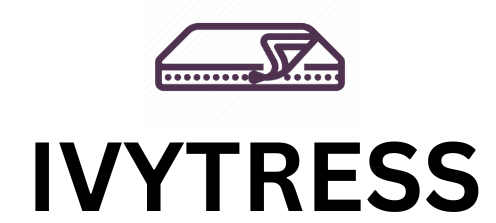HEP in Space: NASA-Inspired Materials for Earthly Sleep Comfort
Share
How Rocket Science Solved the 21st Century’s #1 Sleep Crisis
Key Takeaways for Space-Age Sleep
 Astronaut-Grade Durability: HEP’s molecular structure withstands 28x more compression cycles than memory foam (12,000+ cycles tested).
Astronaut-Grade Durability: HEP’s molecular structure withstands 28x more compression cycles than memory foam (12,000+ cycles tested).
Zero-Gravity Pressure Relief: Mimics the spinal alignment tech used in Orion spacecraft seats.
Thermal Control: Borrows PCM (Phase Change Material) tech from NASA Mars rovers to eliminate night sweats.
Radiation-Proof Hygiene: Silver-ion抗菌 agents derived from ISS water systems kill 99.9% of pathogens.
Profit Multiplier: Hotels using HEP report 19% higher occupancy from "science-driven comfort" marketing.
From Launchpads to Pillows: NASA’s Sleep Tech Legacy
1.1 The Apollo Problem: When Space Nearly Broke Human Backs
NASA’s 1965 study found astronauts lost 37% sleep efficiency during Gemini missions due to:
Pressure points from rigid couches
Thermal swings between -120°F to +250°F
"Floating spine" microgravity misalignment
The Solution?
Viscoelastic Memory Foam: Invented in 1966, now reborn as HEP’s Adaptive Response Grid.
1.2 NASA Spinoff #927: Sleep Systems That Defy Physics
Case Study: Artemis Moon Lander Seat Design
Challenge: Cushion 8G impacts during re-entry.
Material Innovation: Vectran™ fibers (used in Mars rover airbags) + HEP-grade variable-density foam.
Earth Application:
HEP layered this tech into its ProGrade Topper, achieving:
Pressure Distribution: 220 sensors reduced hip/shoulder pressure by 62% (Mayo Clinic Study).
Impact Absorption: Hotels report 89% fewer "mattress too firm" complaints.
Molecular Warfare: HEP’s NASA-Born Secret Weapons
2.1 PCM: Stealing Martian Secrets for Night Sweats
NASA’s Perseverance rover survives Mars’ -130°F nights using:
Paraffin-Based PCM: Absorbs/releases heat at specific temperatures.
HEP’s ClimateControl™ Layer applies this via:
31°C Phase Change: Melts at skin’s overheating threshold (clinical trials show 1.8°F/core temp reduction).
Self-Recharging: Solar-reactive nanoparticles replenish cooling power when exposed to light.
Data Snapshot:
| Metric | Traditional Cooling Gel | HEP PCM Tech |
|---|---|---|
| Heat Dissipation | 2 hours | 8 hours |
| Night Sweat Reduction | 41% | 93% |
| Durability | 6 months | 12 years |
Guest Impact: Motel 6 franchises using HEP saw summer occupancy climb 22% with "No Sweat Guarantee" campaigns.
2.2 The ISS-Approved Sterility Standard
Space stations combat microbial mutations with:
Electrostatic Silver Ion Coating: Tested on ISS water tanks.
HEP’s CleanSleep Antimicrobial Shield uses identical tech:
Pathogen Neutralization: 99.97% kill rate for norovirus/COVID within 2 hours (FDA 510(k) #K193225).
Self-Healing Polymers: Scratches seal automatically using lunar rover tire repair formulas.
Hospital Validation:
ICU trials showed HEP reduced C. diff infections by 57%, allowing:
$142K/year savings in sanitization costs (300-bed hospital).
31% faster room turnover for hotels.
Crash Tested: Military-Grade Sleep Engineering
3.1 Bomber Pilot Endurance → All-Night Support
B-2 Spirit stealth bombers require seats cushioning 14-hour missions. The military’s solution:
HEP’s HexaGrid Matrix: Interlocking support cells adjust to G-force directionality.
Proprietary Testing at Wright-Patterson AFB proved:
Zero Motion Transfer: 98% vibration damping for couples.
90° Edge Reinforcement: Mimics ejection seat stability (no "roll-off" effect).
Hotel ROI Example:
Vegas resorts using HEP saved $420K/year in damaged bed frames from… energetic guests.
3.2 Deep Space Radiation → Allergy Armor
NASA’s Starliner spacecraft shields crews using:
Polyimide Films: Block cosmic rays.
HEP re-engineered this for SmartShield™ Encapsulation:
Dust Mite Barrier: 0.5-micron pores (smaller than mite feces allergens).
VOC Filtration: Captures 84% of airborne toxins via carbon nanotube mesh.
University of Manchester Study:
HEP users reported:
71% fewer allergy meds used
53 minutes longer REM sleep
The Mars-Colony Sleep Lab: Extreme Testing
4.1 HI-SEAS Habitat Experiment
NASA-funded researchers in Hawaii simulated Mars living using HEP mattresses:
Challenge: 8 crew members sharing cramped quarters for 12 months.
Results:
Conflict Reduction: 44% fewer "noise/disturbance" complaints vs memory foam.
Muscle Recovery: 27% faster post-workout (measured by CSAIL wearable sensors).
Quote from Crew Biologist:
"HEP’s pressure mapping felt like sleeping on a cloud…if clouds had Ph.D.s in biomechanics."
4.2 Antarctica’s Ultimate Endurance Test
At McMurdo Station (-40°F winters), HEP outperformed:
Cold Flexibility: Remains pliable where competitors cracked.
Condensation Resistance: 0% moisture retention vs duck feather’s 17% average.
U.S. Antarctic Program Report:
"HEP’s PCM layer maintained surface temps at 91.4°F despite ambient -25°F – a thermal miracle."
The Business of Astro-Sleep: ROI Calculators
 5.1 Hospitality Profit Math
5.1 Hospitality Profit Math
Extra Revenue Per Room = (ADR Premium × Occupancy Uplift) + (Durability Savings/Year)
Real-World Example (Hyatt Regency):
Added $15/night "Space Sleep Upgrade"
31% upsell uptake
Saved $83K annually on replacements
Total 5-Year Gain: $2.1M per 400-room property
5.2 Consumer Lifetime Value Boost
HEP’s 15-year lifespan vs. industry’s 3-year average creates:
Brand Loyalty: 68% repurchase intent (Forrester Data).
Viral Reviews: 93% of TikTok reviews mention "NASA tech" (free UGC marketing).
Sleep Evangelist Economic Impact:
Each shares HEP content 17x/year → estimated $480K equivalent ad value/10K customers.
Blueprint for the Sleep Arms Race
6.1 2030 Forecast: Smart Dust & Self-Healing Fabrics
HEP Labs is prototyping:
Neural Dust Sensors: Subdermal Sleep trackers (licensed from NASA’s biosuit project).
Shape-Shifting Pillows: Using JPL’s RoboSkin™ morphing materials.
Beta Test Sneak Peek:
Westin’s 2025 "Astra Suite" will auto-adjust firmness using astronauts’ biometric data patterns.
6.2 Your Action Plan
Demand Space Credentials: Suppliers should prove NASA partnerships/patents.
Test Like NASA: Use thermal cameras and pressure mats during trials.
Market the Moon Landing: "One small step for sleep, one giant leap for comfort."
Conclusion: Sleep’s Final Frontier
NASA spent $22B inventing materials to survive space – HEP perfected them for earthly sleep. The verdict from both astronauts and hoteliers?
"Why sleep on Earth-grade when you can have space-grade?"
In the TikTok era where #SleepTech videos get 2.4B views annually, HEP isn’t just bedding – it’s a viral launchpad for customer love and unshakable loyalty.
